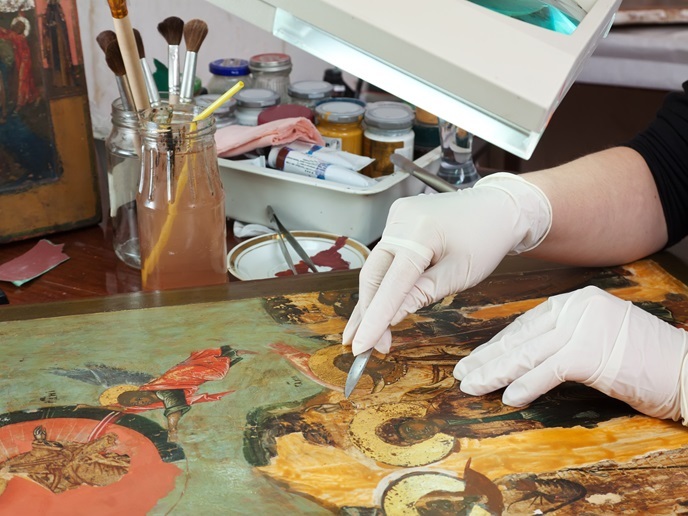Redefining art restoration with transatlantic expertise
Conservators worldwide face the same problem: centuries-old artifacts are fragile and often damaged by pollutants, light, humidity, or earlier restoration attempts. Conventional art conservation methods can sometimes cause further harm. The GREENART(opens in new window) project aims to replace these methods with bio-based, non-toxic materials and precision delivery systems that protect both objects and the people handling them.
Complementary art restoration
From the outset, the project required transatlantic collaboration. European partners contributed sustainable polymers, nanostructured materials, and conservation science, while U.S. teams brought advanced analytical techniques, access to major heritage collections, and experience scaling lab results for real-world use. The University of Florence and other EU institutions led the development of biodegradable cleaning agents and functional coatings, based on nanocellulose and other bio-derived materials. These agents target specific contaminants, from yellowed varnish to corrosion, without affecting underlying surfaces. On the U.S. side, institutions including the Metropolitan Museum of Art(opens in new window), the Guggenheim(opens in new window), LACMA(opens in new window), and the Museum of Fine Arts, Houston(opens in new window) have provided testing facilities with state-of-the-art spectroscopy, microscopy, and imaging. U.S. partners in turn have access to EU expertise in materials and restoration techniques. “They have the technology, the collections, and excellent conservators,” says Piero Baglioni, GREENART coordinator and professor of physical chemistry at the CSGI-University of Florence(opens in new window). “This transatlantic collaboration is a perfect match for developing sustainable, safe materials.” U.S. conservators also bring experience with diverse modern artifacts materials, from polymaterial sculptures to delicate printed silks, often harder to preserve than traditional works. This has expanded GREENART’s reach to contemporary art, where each square millimeter can present a different chemical challenge. This exchange means prototypes developed in EU labs can be evaluated almost immediately on reference samples in U.S. facilities, and vice versa, enabling cross-validation of results for stronger conservation guidelines.
Applying cutting-edge transatlantic techniques
Teams work side by side to refine material formulations and application techniques. U.S. analytical data helps EU chemists work with nanomaterials – extremely small particle size and unique surface properties that can help to achieve better cleaning precision. EU expertise meanwhile is being used to inform U.S. trials on coating stability. One example came from the Metropolitan Museum’s challenge of cleaning painted silk without damaging pigments. EU researchers adapted a hydrogel originally used in medicine, engineered to release tiny amounts of water that penetrate only a few microns before reabsorption. Another example is the removal of unwanted materials from the surfaces of precious paintings by artists such as Jackson Pollok, Picasso, Roy Lichtenstein, just to mention a few. Combined with U.S. monitoring, the method worked for both textiles and delicate modern paintings. “We work in an iterative loop,” explains Baglioni. “They test, give feedback, and we adjust. Without this real-time exchange, progress would be much slower.” Regular joint workshops and research exchanges keep science aligned with practical conservation needs, ensuring solutions are adaptable for collections worldwide.
A life beyond museums
GREENART’s outputs include bio-based gels and emulsions, nanocellulose coatings with protective and antimicrobial properties, and smart sensors for monitoring environmental conditions. Several are now being validated on real objects in Europe and the U.S. All new materials follow a safe and sustainable by design(opens in new window) approach, with performance and environmental impact evaluated through full life-cycle assessments. The project has also produced open access guidelines(opens in new window) to benefit museums, archives and private collectors. Some materials have even found uses beyond heritage, such as in cosmetics and fashion, thanks to their gentle yet effective cleaning properties. As Baglioni puts it: “The solutions we’re creating for art can have a life beyond museums. But the priority is always to protect heritage in a way that’s safe for people and the planet.” As cultural heritage faces increasing threats from climate change and pollution, such partnerships are becoming even more important. GREENART is an example of how cutting-edge science and hands-on conservation expertise can work together to protect the past and the future.







